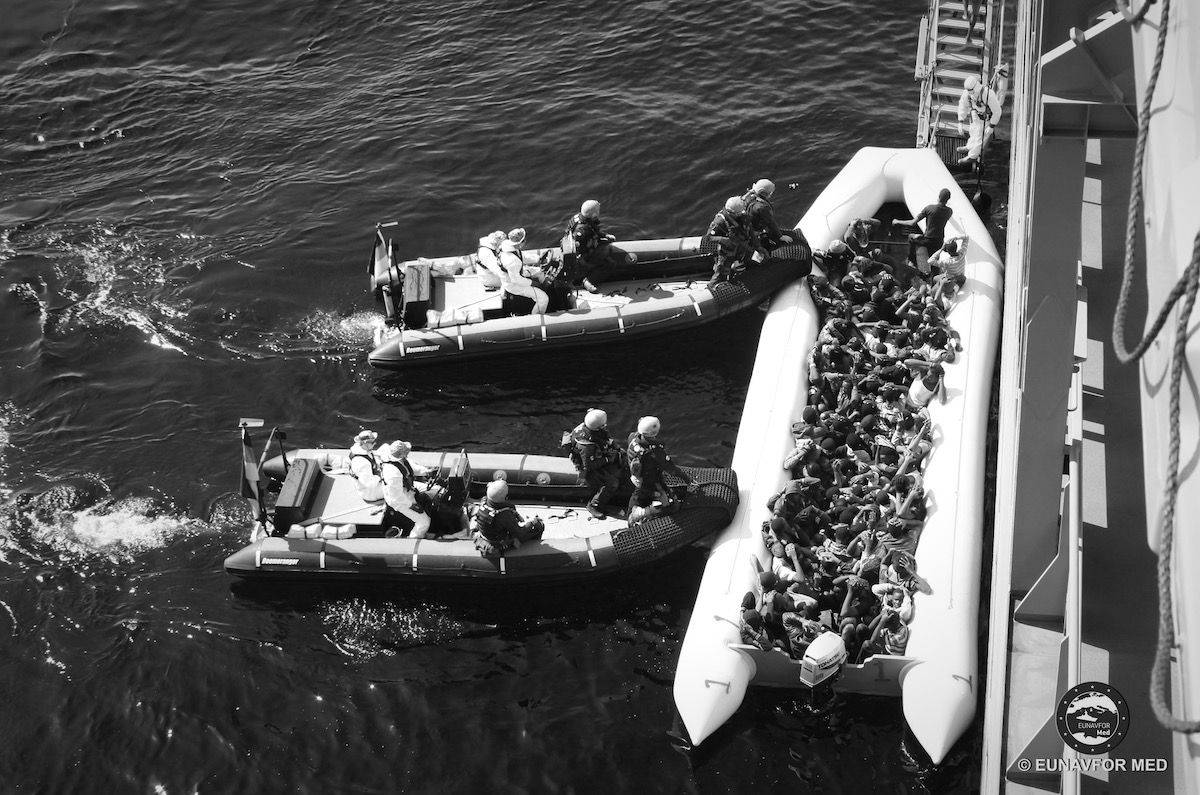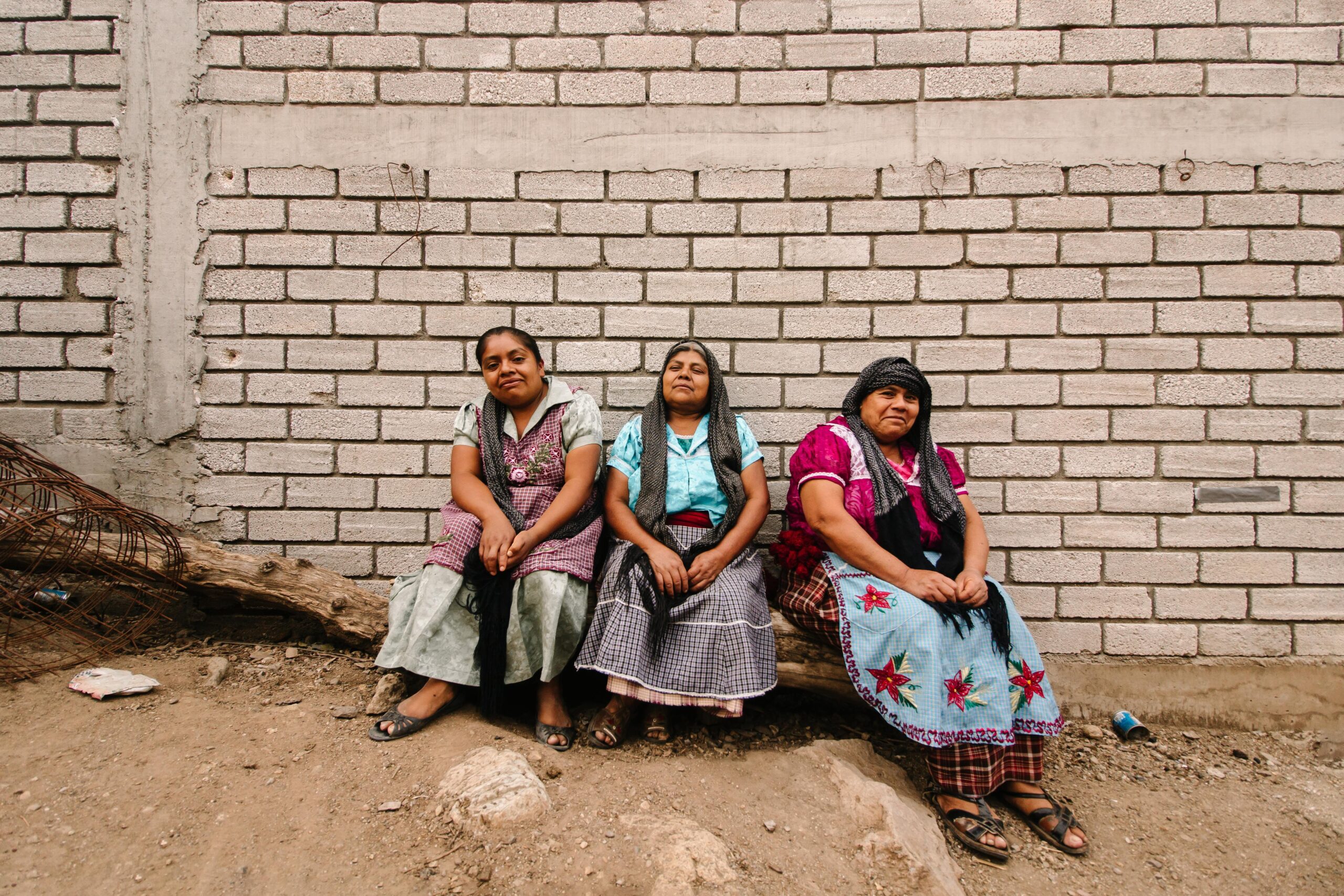*This blog post was originally published here
In the last few years, the Mediterranean area has witnessed at least three massive and unprecedented military operations that involve EU member states: the Italian Mare Nostrum (2013-2014), EUNAVFOR Med operation Sophia (2015-2020), and the NATO intervention in the Aegean Sea (2016-ongoing). As migration pressure has intensified, the Mediterranean Sea has become more a frontline than a bridge. As a result, the deployment of military means to control, stop or deter migration flows has become an increasingly common practice: the military has gone from carrying out extraordinary rescue interventions to being systematically integrated with the governance of migration. While the realm of the civilian and the military has indeed long been connected, with military actors increasingly performing civilian tasks, recent trends of convergence demand a critical reflection of this phenomenon which normalizes past and present practices of coercion and control in the name of emergency. The militarization of the Mediterranean is a political choice resulting both from the unwillingness to establish a new common migration management system and from the European obsession with establishing a “right way to move”.
Although the Mediterranean has always been viewed either as a bridge or a border, since the end of the 20th century European Southern states started to deploy warships and other military hardware to protect its waters in response to the classification of “illegal” migration has a threat to national security. One of the first EU military missions was deployed in the 1990s with the Italian Navy to regulate immigration from Albania. Starting from the early 2000s, the need to more effectively secure its maritime frontiers, led to a number of EU Council meetings that established ad hoc missions with the help of the military. However, with time, the deployment of the military to deal with migration flows has moved from being an exceptional, defensive and one-time tactic to a systematic, offensive, long-term response. Historically, borders have always played primarily a defensive function, protecting the state’s security and territorial integrity by excluding outsiders. However, the deployment of the military in the Mediterranean Sea to curb migration flows responds to the necessity of protecting EU States’ internal security from a non-military threat, a role normally assigned to law enforcement agencies. The difference is not a negligible one: while both the police and the military are central in upholding state sovereignty, the former would work under a logic of “minimal force” in normal political circumstances, whereas the latter would work under a logic of “maximum force” during an emergency, seeking to defeat an enemy. In this sense, migrants attempting at crossing the sea become enemies of the state, and any action against them becomes legitimate. Deploying the military strengthens the “us vs them” narrative, “othering” migrants as an existential threat that requires (extra)ordinary measures outside the law-enforcement procedures with which migration is normally dealt. Migrants are dispossessed of their rights as human and political beings and become “illegal”, “unauthorized”, “irregular,” or “clandestine”, powerful labels that call for militarized modes of disciplining their bodies.
Even if the multiple operations launched in the Mediterranean Sea since the 2000s do have some military component, Operation Sophia is the first European military operation tout court that happens in a wider diplomatic context offered by both the EU and the NATO. Far from simply offering extra-assistance to civil border patrol agencies and humanitarian actors in search and rescue (SAR) operations, Operation Sophia has an offensive mandate which entails the use of military tactics, technologies and equipment. First, it is a CSDP operation with the potentially open coercive mandate to ‘take all necessary measures’ against a vessel and related assets, including through ‘disposing of them or rendering them inoperable’. This implies that the mission actively seeks to stop migrants’ smugglers; moreover, the military personnel can resort to force in cases other than self-defense, which could theoretically lead to peace-enforcement type activities, given the vague mandate strengthened by the UNSC Resolution that de facto authorizes to neutralize and defeat a designated enemy. Furthermore, the language used is a heavily militarized one. Official documents frame EUNAVFOR MED as a military operation and its goals are framed in terms of strategic objectives divided into different phases: first, conducting intelligence gathering and patrolling on the high sea to spot possible military objectives; second, conducting boarding, search, seizure and diversion of the military objective and finally taking all necessary measures against the military objective and related assets, including through disposing of them. If compared with the humanitarian nature of SAR operations, the contribution played by Operation Sophia in the militarization of the Mediterranean is striking. As a matter of fact, Operation Sophia does not have SAR as part of its mandate and far from performing humanitarian-military operations, it employs military forces to launch a full-scale military action.
Moreover, for its second phase, Operation Sophia’s mandate was strengthened by the 2240 UNSC Resolution authorizing Member States to dispose of vessels that are being used for migrants or human smuggling. The UNSC Resolution acquires even a higher symbolic meaning in the process of militarization, especially if we consider that UN bodies have always stressed the importance of focusing the European action on saving lives rather than on military operations. Even if the UNSC did not authorize the use of “all necessary measures” in confronting migrant smugglers and human traffickers (as adopted in the initial draft), the wording used is nevertheless a blanket mandate to the use of force.
Furthermore, the decisive contribution of EUNAVFOR Med to the militarization of the Mediterranean Sea is testified by the use of military technologies and equipment at its disposal. As the military becomes increasingly important, the arms industry has become an integral player in the European Union. From its beginning, EUNAVFOR Med deployed military vessels, helicopters, drones, and submarines―as well as hundreds of soldiers to actively trace smuggling networks, chase smugglers at sea and destroy their boats before departure. Among military surveillance technologies, EUNAVFOR Med has used drones (UAVs), a classified mission network (MED CMN), a satellite military connection (X Band) as well as other military tools. These technologies use state of the art military IT to trace, map, control and prevent illegal migration as well as to share top-secret information. Moreover, in order to provide Operation Sophia and other border control operations with the best military technology available, the EU has long-partnered with arms and defense giants (Thales, Leonardo, Airbus, BAE Systems) and it has financed several military research project (SEABILLA, I2C,OCEAN 2020) . This strong partnership with the military industry has started at least since the Lisbon Treaty which establishes the need for MSs to improve their military capabilities. Since then, the emerging of a military/security-industrial complex in Europe has become a highly political choice, largely dependent on the will of governments to spend considerable amounts of their budgets in fostering this business and contributing to an overall militarization of European foreign policy. This way, the Mediterranean Sea is geographically constructed as frontline, an imagined liquid border that is continuously reproduced and moved according to the movement of those illegal bodies that attempt to cross it. The sea is reshaped as a new borderscape, inviting us to rethink questions of space, territory, identity and power.
With Operation Sophia, not only do the troops use their battlefield experience and strategies, but they also bring along battlefield technologies and tools. The Mediterranean Sea is redesigned as a new battlefield with ongoing warfare. Without any appraisal on the success of EUNAVFOR Med, the blurring lines between the military and the civilian sphere are problematic, because they reveal a progressive shift towards a state of never-ending warfare and surveillance. This, in turn, allows justifying the treatment of civilian issues as military ones, thus authorizing the use of extraordinary measures that increase violence at the border. Although this can be read in the changing role of the military that increasingly often deal with humanitarian issues, it nevertheless carries broader implications for the criminalization of migrants, enemies in an inexistent war at sea. The militarization of the Mediterranean is a deliberate choice among many possible alternatives. It artificially creates a liquid border that changes Mediterranean geographical and spatial imaginaries, turning it into a deadly frontline that takes its toll. For the moment, Operation Sophia has officially come to an end. Yet its successor, Operation IRINI, is again another military operation. The migration crisis offers European states an occasion to think about what role they want the military to play in the future and the militarization of the Mediterranean, if anything, is a powerful and alarming sign of the way in which EU member states intend to deal with humanitarian crises.




